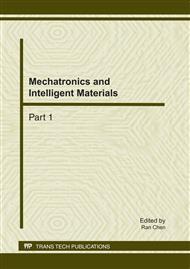p.320
p.325
p.330
p.336
p.340
p.347
p.352
p.357
p.364
Dynamic Performance Analysis for Collaborative Design Model of Machinery Products Based on Invariant Analysis
Abstract:
This paper studied the problem of deadlock performance analysis for collaborative design process model based on extended objective Petri Net (OPN). Firstly, the definition of CSCD extended OPN model based on decision rules has been proposed by analyzing the collectivity requirement for the machinery products collaborative design system to be built. Besides, models for the OPN model of process controlling nets and design unit objective class. Then OPN invariant analysis theory has been adopted to analyze the dynamic performance of deadlock to the part design unit by building its object communication net. The dynamic performance of the whole model could be obtained by analyzing the performance of all the design unit object class.
Info:
Periodical:
Pages:
340-346
Citation:
Online since:
February 2011
Authors:
Price:
Сopyright:
© 2011 Trans Tech Publications Ltd. All Rights Reserved
Share:
Citation:


